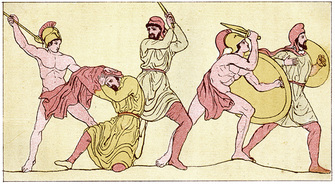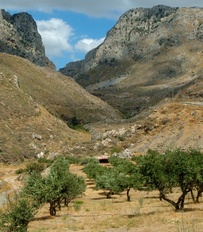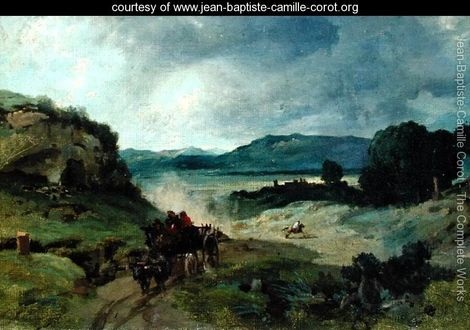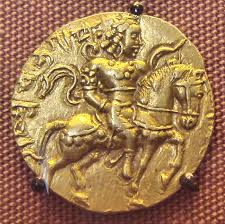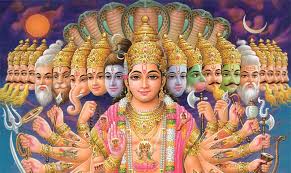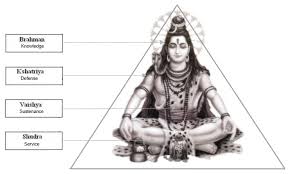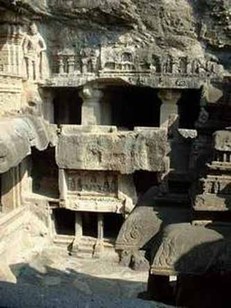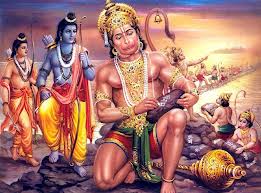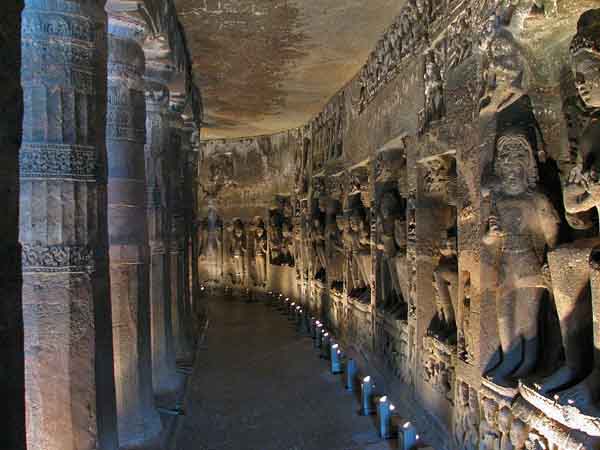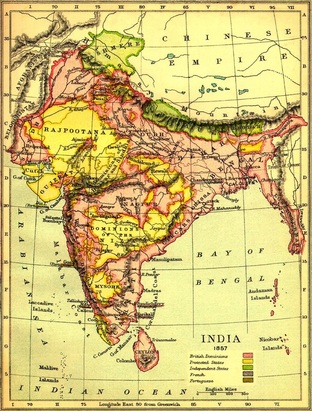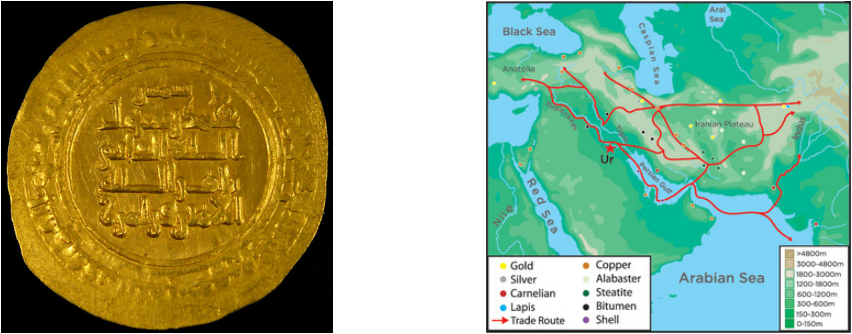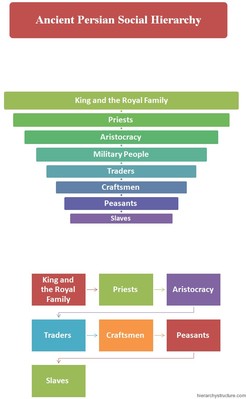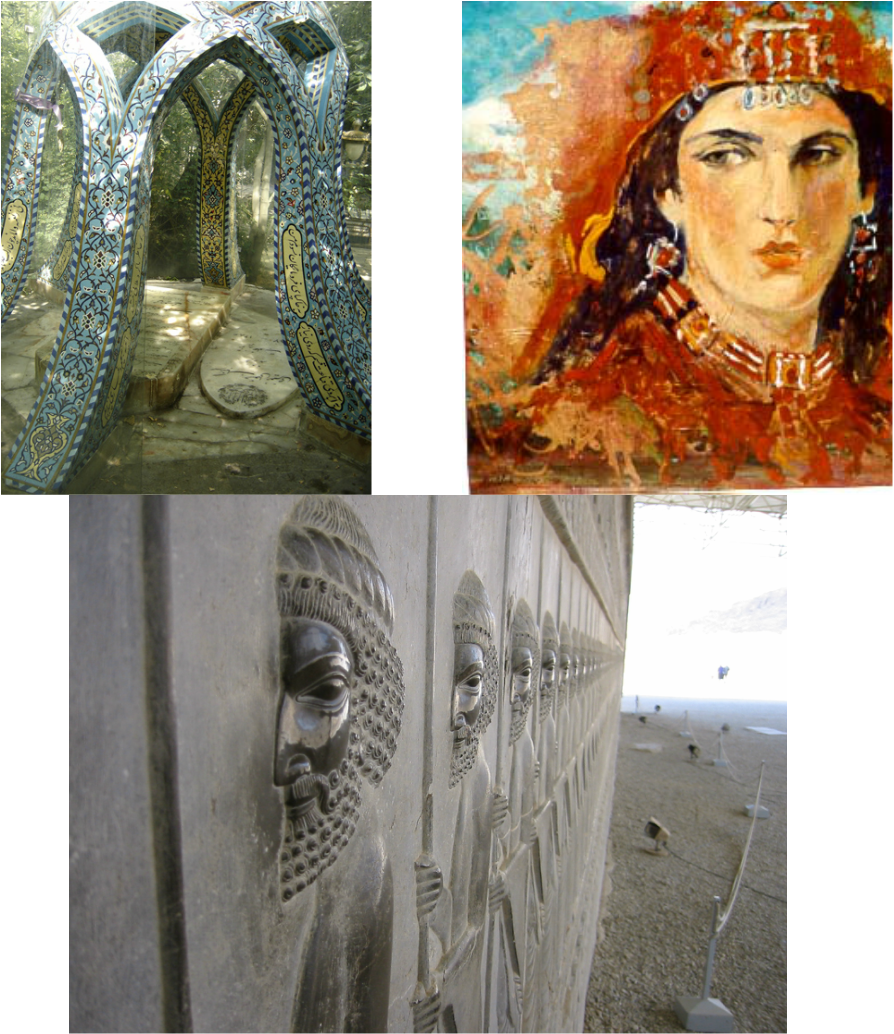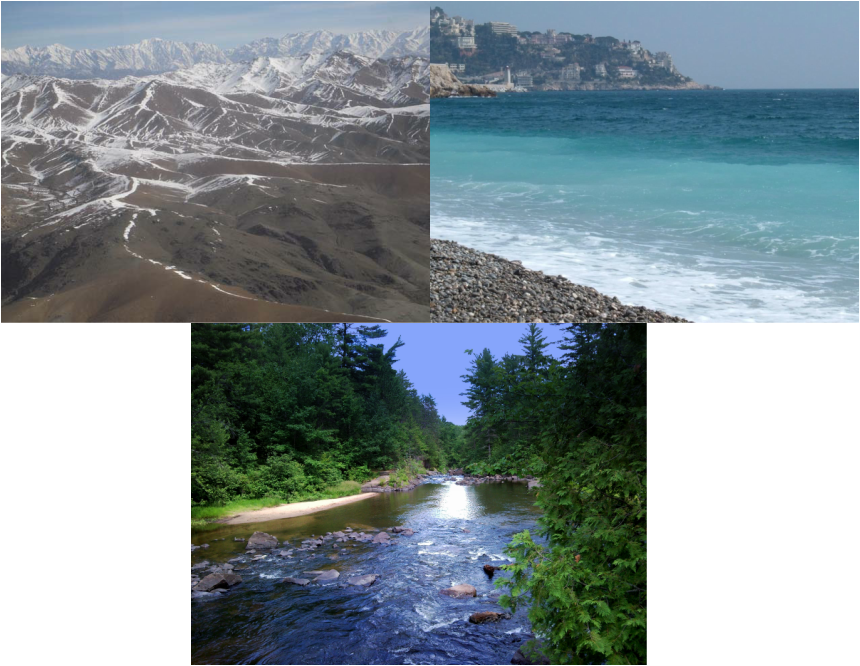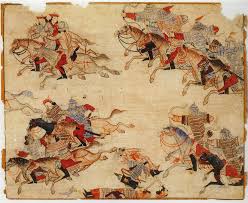P. E. R. S. I. A. N. Chart of Europe (Rome and Greece) in the Classical Era 500 BCE- 500 CE
By Julianna Smith
Political
· Persian Wars (Greece) – Greek city states and Persia went to war in 498 BCE with the attack of the Persian city Sardis. The Persian king sent a naval fleet to the Athenian city of Marathon in 490 BCE, and although the Athenians defeated the Persian forces, the Persians did not give up the fight. In 480 BCE, the Persian military attacked Thermopylae where m the Persians defeated 5,000 Greek soldiers. However, in 479 BCE, the Greeks conquered the Persians once and for all at the battle of Salamis.
http://ancienthistory.about.com/od/greekmapsall/a/70107greekgeogr.htm
· Persian Wars (Greece) – Greek city states and Persia went to war in 498 BCE with the attack of the Persian city Sardis. The Persian king sent a naval fleet to the Athenian city of Marathon in 490 BCE, and although the Athenians defeated the Persian forces, the Persians did not give up the fight. In 480 BCE, the Persian military attacked Thermopylae where m the Persians defeated 5,000 Greek soldiers. However, in 479 BCE, the Greeks conquered the Persians once and for all at the battle of Salamis.
http://ancienthistory.about.com/od/greekmapsall/a/70107greekgeogr.htm
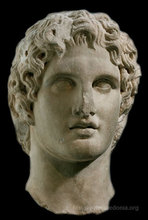 Alexander the Great
Alexander the Great
· Alexander the Great (Greece) – Alexander the Great was born in 356 BCE. Although he ruled over the Greeks, he was Macedonian. Alexander took rule in Greece in 334BCE. Alexander ruled over a great army and was a great military commander. With an army of 35,000 men, Alexander successfully defeated 40,000 Persians. Alexander wanted to spread the Greek civilization to the ends of the earth, and to rule over the largest empire ever.
http://www.ancient.eu.com/Alexander_the_Great/
http://www.historyofmacedonia.org/AncientMacedonia/AlexandertheGreat.html
http://www.ancient.eu.com/Alexander_the_Great/
http://www.historyofmacedonia.org/AncientMacedonia/AlexandertheGreat.html
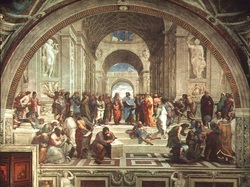
· Athenian Democracy (Greece)- Democracy started in Athens, a city state in Greece. Democratic thinker like Cleisthenes, Solon, and Ephiatles contributed to the Athenian form of democracy. In this time, voters were persuaded by political satire performed by comics at the theater. Although some city states tried to develop a democracy, none worked better than that of Athens.
https://www.princeton.edu/~achaney/tmve/wiki100k/docs/Athenian_democracy.html
http://greece.mrdonn.org/athensdemocracy.html
https://www.princeton.edu/~achaney/tmve/wiki100k/docs/Athenian_democracy.html
http://greece.mrdonn.org/athensdemocracy.html
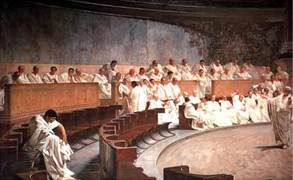 The Roman Senate
The Roman Senate
· Roman Republic (Rome) – Around 509 BCE, the Romans gained their freedom from the Etruscans. Once the Romans gained their freedom, they started a republic, a system of government where the citizens of Rome elected representatives to govern. In the early Roman Republic, the aristocracy or the elites were the dominating class. Later on, however, the Senate became the dominant power. They decided the laws that were to be carried out in the Empire.
http://www.princeton.edu/~achaney/tmve/wiki100k/docs/Roman_Republic.html
http://www.princeton.edu/~achaney/tmve/wiki100k/docs/Roman_Republic.html
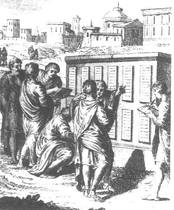
· The 12 Tables (Rome) – The Twelve Table were instated in the Roman Republic in 449 BCE. These laws were considered to be some of Rome’s most important laws, and they were the first written laws in Rome. These laws gave citizens rights and equality by the law.
http://www.ushistory.org/civ/6a.asp
Roman citizens looking at the 12 Tables
http://www.ushistory.org/civ/6a.asp
Roman citizens looking at the 12 Tables
Economy
· Greek trade – In Greece, much of the country was reliant on the mountainous terrain. Greek city state traded with each other. The Greeks traded olive oil, crafts, and manufactured goods.
· Economy (Greece) – The economy in Greece was mostly based on agriculture. Because of numerous wars, the Greeks depended on slaves to tend to the lands. As the economy in Greece evolved and became more commercialized, the social hierarchy in Greece became more and more unequal.
http://history-world.org/greece%20economy.htm
http://wps.ablongman.com/long_stearns_wc_4/17/4389/1123706.cw/index.html
http://web.clas.ufl.edu/users/kapparis/aoc/athens.htm
· Economy (Greece) – The economy in Greece was mostly based on agriculture. Because of numerous wars, the Greeks depended on slaves to tend to the lands. As the economy in Greece evolved and became more commercialized, the social hierarchy in Greece became more and more unequal.
http://history-world.org/greece%20economy.htm
http://wps.ablongman.com/long_stearns_wc_4/17/4389/1123706.cw/index.html
http://web.clas.ufl.edu/users/kapparis/aoc/athens.htm
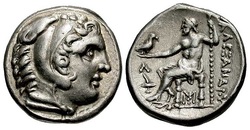 Classical Greek coin with the head of Alexander the Great
Classical Greek coin with the head of Alexander the Great
· Coinage (Greece) – Silver coins were prominently manufactured throughout classical Greece. In Northern Greece, there were rich silver deposits, which ssier coins were made from and exported to Persia. Coins were also depicted with the head of a ruler.
http://www.fleur-de-coin.com/currency/greek-coin-history
http://www.fleur-de-coin.com/currency/greek-coin-history
· Technology (Greece) – Since the Greeks focused more on making crafts and tending to agriculture, they were not so concerned with having technological innovations. China and India were more advanced in mathematics and science than were the Greeks. Also, the Greeks held more of a philosophical view than a scientific one.
http://history-world.org/greece%20economy.htm
http://history-world.org/greece%20economy.htm
· Trade (Rome) – Roman trade routes, both land and sea, were established. Legions would carry goods to be traded along land routes. Goods that were much larger, like metals, lumber, and building supplies, were traded along sea routes.
· Economy (Rome) – The economy in Rome at this time was mostly agricultural. However, it became highly urbanized. Once the economy started to become more urbanized, the rural economy in Rome declined. Most changes in the economy were the result of the aristocracy, or wealthy class and the increasing size of Rome.
http://www.unrv.com/economy.php
http://www.oxfordbibliographies.com/view/document/obo-9780195389661/obo-9780195389661-0120.xml
· Economy (Rome) – The economy in Rome at this time was mostly agricultural. However, it became highly urbanized. Once the economy started to become more urbanized, the rural economy in Rome declined. Most changes in the economy were the result of the aristocracy, or wealthy class and the increasing size of Rome.
http://www.unrv.com/economy.php
http://www.oxfordbibliographies.com/view/document/obo-9780195389661/obo-9780195389661-0120.xml
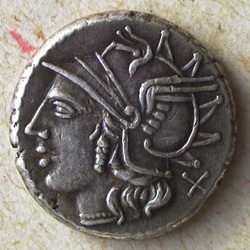
· Coinage (Rome) – Coins made of bronze, copper, silver, and gold that were circulated throughout Classical Rome made Rome one of the world’s most developed coin systems. Coins were used by the Empire to spread various forms of propaganda. Coins in this period of Rome were so popular that they could be found in places as far as India.
http://www.unrv.com/economy.php
http://www.unrv.com/economy.php
Religion
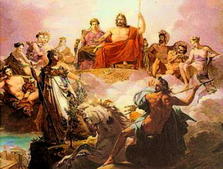 The Greek Gods
The Greek Gods
· Deities (Greece) – The Greeks used their own Gods to explain the universe. Of course, the most popular god was Zeus. Zeus supposedly was the most supreme and important of the gods. Other gods include Athena, Percius, Hermes, Aphrodite, and Poseidon. The gods were said to have lived on Mount Olympus. The Greeks gave these gods human appearances and characteristics.
· Rituals (Greece) – Religious rituals in Greece included the pouring of libations and the sacrifice of animals. The animal sacrificed was always the same gender as the god that they were sacrificing it to. After the sacrifice, the priests would preside over religious ceremonies and prayers. The priests were also always the same gender as the god that they represented.
http://www.ancient.eu.com/Greek_Religion/
http://www.ancient.eu.com/Greek_Religion/
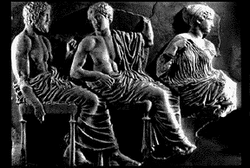
· Deities (Rome) – Gods in Rome were like the gods in Greece. The Romans used the gods to explain the universe and what happened in day to day life. The main three gods were Juno, the protector of women, Jupiter, the protector of the state, and Minerva, the goddess of wisdom. Two other gods that were important to Roman religion were Mars, the god of war, and Mercury, the god of trade.
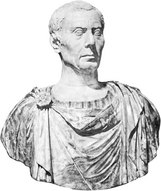 Julius Caesar was worshipped as a god
Julius Caesar was worshipped as a god
·Divine rule (Rome) – Remus and Romulus, the founders of Rome, were said to have been made gods after they died. Augustus Caesar, who was said to be a descendant of Remus and Romulus, was also made into a god. Also, Julius Caesar and his descendants were all worshipped as gods. This was especially because the Caesars said they were gods on earth.
http://www.pbs.org/empires/romans/empire/gods.html
http://www.historylearningsite.co.uk/ancient_rome_and_religion.htm
http://www.pbs.org/empires/romans/empire/gods.html
http://www.historylearningsite.co.uk/ancient_rome_and_religion.htm

· The Pope (Rome) – Towards the end of the Roman Empire, Christianity became the dominant religion. The Catholic Church was the Church of Rome. The head of this church was the Pope. The Pope acted as head of Church and State.
Society
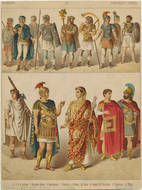
· Social classes (Greece) – Men, like in most classical societies, were the dominate people in Greece at the time. Men were able to vote, own property, and hold public office. The social class in Greece was made up of three groups.
1. The aristoi or the “Best people.” This class was the wealthy class. They owned more money and property than everybody else.
2. The middle class, or business class. They engaged in trade and manufacturing.
3. The poorer citizen class. They did not own a lot of property. However, they still owned some.
1. The aristoi or the “Best people.” This class was the wealthy class. They owned more money and property than everybody else.
2. The middle class, or business class. They engaged in trade and manufacturing.
3. The poorer citizen class. They did not own a lot of property. However, they still owned some.
· Women (Greece) – Women were seen as inferior to men in this time. They could not vote, own land, or inherit from their father. The women’s place was in the home, and they could not have contact with a male who was a non relative. Women’s husbands were chosen by their father.
http://www.ancient.eu.com/article/483/
http://www.ancient.eu.com/article/483/
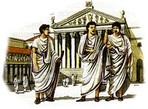 Patricians
Patricians
· Social Classes (Rome) – The men in the Roman Republic were the dominant people, as in many classical civilizations. The classes included ( from lowest to highest) : the slave group, the plebeians, the equestrians, and the patricians.
· Women (Rome) – The social status of a woman were determined by the social status of her father. Women were seen as inferior to men in the eyes of the law. This means that the punishments for breaking a law were more brutal for women than men. Also, women were expected to work in the home.
http://www.pbs.org/empires/romans/empire/women.html
http://www.mariamilani.com/ancient_rome/rome_social_structure_class.htm
http://www.pbs.org/empires/romans/empire/order.html
http://www.pbs.org/empires/romans/empire/women.html
http://www.mariamilani.com/ancient_rome/rome_social_structure_class.htm
http://www.pbs.org/empires/romans/empire/order.html
Intellectual
 Plato and Aristotle
Plato and Aristotle
· Plato and Aristotle ( Greece) – These two figures were the most important philosophers in classical Greece.
1. Plato – Plato was a student of Socrates. Although he had many interests in politics, he is best known for his philosophical views. One of his best known ideas is the Theory of Ideas, which states that we cannot have notions about beauty, justice, or virtue without knowledge of these things from an earlier time.
2. Aristotle – He was a student of Plato. He was the first person to develop the idea of logic. Aristotle presented many mathematical and scientific ideas that were accepted until modern era.
1. Plato – Plato was a student of Socrates. Although he had many interests in politics, he is best known for his philosophical views. One of his best known ideas is the Theory of Ideas, which states that we cannot have notions about beauty, justice, or virtue without knowledge of these things from an earlier time.
2. Aristotle – He was a student of Plato. He was the first person to develop the idea of logic. Aristotle presented many mathematical and scientific ideas that were accepted until modern era.
· Literature (Greece) – Greek literature developed out of the earlier form of oral storytelling. The theater was also a way for the Greeks to tell their stories. Plays were used to bring honor to the gods and goddesses as well. Plays were separated into comedies and tragedies.
- Homer, a blind poet, wrote two great pieces of literature called the Iliad and the Odyssey.
http://www.ancient.eu.com/Greek_Philosophy/
http://www.abcteach.com/free/i/intro_to_greek_lit.pdf
- Homer, a blind poet, wrote two great pieces of literature called the Iliad and the Odyssey.
http://www.ancient.eu.com/Greek_Philosophy/
http://www.abcteach.com/free/i/intro_to_greek_lit.pdf
 Roman numerals
Roman numerals
· Literature (Rome) – Roman literature was written in Latin. These Latin works of literature were influenced by the Greeks and their literature. Roman literature included many authors and poets. The most important include Seneca the Young, Vergil the poet, Lucan the epic poet, and Horace the lyric poet and satirist.
· Math (Rome) – Although the Romans had little use for mathematics at this time, except for practical matters, Roman numerals are still used today. They were used to a great extent in trade in Europe. However, since writing Roman numerals for every day arithmetic was not easy, the Romans mostly used an abacus, which came from Babylonian and Greek culture.
http://www.storyofmathematics.com/roman.html
http://www.ancient-literature.com/rome.html
· Math (Rome) – Although the Romans had little use for mathematics at this time, except for practical matters, Roman numerals are still used today. They were used to a great extent in trade in Europe. However, since writing Roman numerals for every day arithmetic was not easy, the Romans mostly used an abacus, which came from Babylonian and Greek culture.
http://www.storyofmathematics.com/roman.html
http://www.ancient-literature.com/rome.html
Arts and Architecture
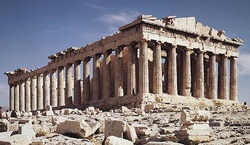
· The Parthenon (Greece) – Under the orders of Pericles, the construction of the Parthenon began in 447 BCE. It was built as a temple to be used by the Greeks. The temple was fully constructed in 432 BCE. This magnificent building was built to show the world the wealth and prosperity of Athens at the time.
- The Parthenon building was a prime example of Doric and Ionic architecture. The temple was rectangular with columns built around the perimeter of the building.
http://academic.reed.edu/humanities/110tech/parthenon.html
http://www.ancientgreece.com/s/Parthenon/
- The Parthenon building was a prime example of Doric and Ionic architecture. The temple was rectangular with columns built around the perimeter of the building.
http://academic.reed.edu/humanities/110tech/parthenon.html
http://www.ancientgreece.com/s/Parthenon/

· Architecture (Greece) – Three main types of Greek architectural columns are:
1. Doric- often more sturdy and plain. The Doric style was evident in the Parthenon building.
2. Ionic – often more slender and stylish. Usually, this design looked like a scroll shape. The Ionic style was evident in the Erechtheum, a temple directed to Athena, Poseidon, and Erectheus.
3. Corinthian – In this style, the top of the column is decorated with carved leaves and is very complex. Although it was not a very common design, Corinthian columns were found in the temple to Apollo at Bassae and the Temple of Zeus at Athens.
http://www.ancientgreece.com/s/Art/
1. Doric- often more sturdy and plain. The Doric style was evident in the Parthenon building.
2. Ionic – often more slender and stylish. Usually, this design looked like a scroll shape. The Ionic style was evident in the Erechtheum, a temple directed to Athena, Poseidon, and Erectheus.
3. Corinthian – In this style, the top of the column is decorated with carved leaves and is very complex. Although it was not a very common design, Corinthian columns were found in the temple to Apollo at Bassae and the Temple of Zeus at Athens.
http://www.ancientgreece.com/s/Art/
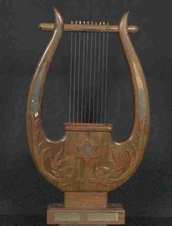
· Music (Greece) – Music was an incredibly important part of Greek society. Music was played at religious festivals, weddings and funerals, and banquets. The Odeion, a enclosed concert building in Athens, is an example of the importance of music to Greek culture.
- The lyre – probably the most important Greek instrument. This instrument was learned by many and could either be played solo or with an accompaniment. Picture of this instrument are frequently found on Greek pottery. http://www.ancient.eu.com/Lyre/
http://www.metmuseum.org/toah/hd/grmu/hd_grmu.htm
- The lyre – probably the most important Greek instrument. This instrument was learned by many and could either be played solo or with an accompaniment. Picture of this instrument are frequently found on Greek pottery. http://www.ancient.eu.com/Lyre/
http://www.metmuseum.org/toah/hd/grmu/hd_grmu.htm
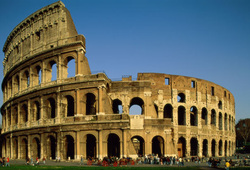 The Colosseum
The Colosseum
· Roman architecture – Roman architecture usually followed the Greek style of architecture like the Doric, Ionic, Corinthian style. The Romans, however, did create their own form of the Corinthian style column where the top was much more elaborate. This style was evident in the Arch at Septimus Severus in Rome. Some Roman buildings in the classical style include:
- The Pantheon (125 CE)
- The Colosseum (1st century CE)
http://www.ancient.eu.com/Roman_Architecture/
- The Pantheon (125 CE)
- The Colosseum (1st century CE)
http://www.ancient.eu.com/Roman_Architecture/
· Roman Music – The music in Rome was based off the Greek style of music. Roman music was used in religious festivals, gladiator fighting events, and major public events. Although music was important to Roman culture, they did not create any innovations in writing music.
- Musical instruments in the classical Roman era include: the lyre, the Kithara, the Lute, and the Aulos. http://rateyourmusic.com/genre/Ancient+Roman+Music/
http://www.unrv.com/culture/roman-musical-instruments.php
- Musical instruments in the classical Roman era include: the lyre, the Kithara, the Lute, and the Aulos. http://rateyourmusic.com/genre/Ancient+Roman+Music/
http://www.unrv.com/culture/roman-musical-instruments.php
Near Geography
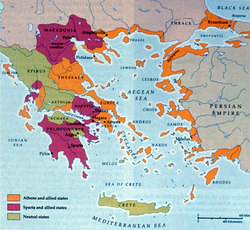
· Location of Greece – Classical Greece was located in Europe on what is now known as the Balkan Peninsula. Located on the Mediterranean Sea, Classical Greece had a Mediterranean climate.
· Terrain of Greece – Greece has a very mountainous terrain. This terrain made fertile soil very limited, which gave way for the prominence of trade among the Greek city states.
· The three main regions of classical Greece were Northern Greece, Central Greece, and the Peloponnese.
http://www.slideshare.net/Ljohnston7/romegreece-geography
http://www.fcps.edu/KingsParkES/technology/ancient/greece.htm
http://ancienthistory.about.com/od/greekmapsall/a/70107greekgeogr.htm
· Terrain of Greece – Greece has a very mountainous terrain. This terrain made fertile soil very limited, which gave way for the prominence of trade among the Greek city states.
· The three main regions of classical Greece were Northern Greece, Central Greece, and the Peloponnese.
http://www.slideshare.net/Ljohnston7/romegreece-geography
http://www.fcps.edu/KingsParkES/technology/ancient/greece.htm
http://ancienthistory.about.com/od/greekmapsall/a/70107greekgeogr.htm
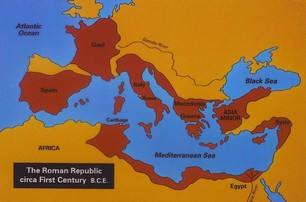 Roman Republic circa 1st century BCE
Roman Republic circa 1st century BCE
· Location of Rome – Classical Rome was located in Europe on the Italian Peninsula on the Mediterranean Sea, giving it a Mediterranean climate.
· Origins- The city of Rome began in central Italy, but the empire reached over the Mediterranean basin and most of Western Europe.
· Terrain of Rome – Rome was very mountainous and hilly. Rome did not have as rugged of a terrain as Greece, which made Rome not as isolated as Greece.
http://www.timemaps.com/civilization/Ancient-Rome
· Origins- The city of Rome began in central Italy, but the empire reached over the Mediterranean basin and most of Western Europe.
· Terrain of Rome – Rome was very mountainous and hilly. Rome did not have as rugged of a terrain as Greece, which made Rome not as isolated as Greece.
http://www.timemaps.com/civilization/Ancient-Rome
P. E. R. S. I. A. N. Chart of Europe (Rome and Greece) in the Classical Era 500 BCE- 500 CE
By Julianna Smith
By Julianna Smith
P.E.R.S.I.A.N. Chart for India during the Classical Period
By Sophia Gonzalez-Mayagoitia
Political
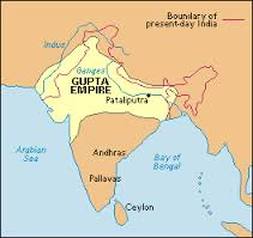
Classical India first went through a
formative phase beginning at the end of 600 BCE. There existed sixteen major
states of which some were monarchies and some republics. Both were dominated by
priests and warriors. The Mauryan
Dynasty maintained large armies, developed a bureaucracy, were highly
autocratic. Their government relied largely on their ruler’s personal and
military power. Chandragupta’s grandson, Ashoka, lived a lavish lifestyle. He
was influenced greatly by nature and spiritualism but used methods of expansion
which caused a lot of bloodshed. Ashoka converted to Buddhism later on and he
spread it through the empire. The Gupta dynasty, which began in 320 CE,
was not made up of very powerful individual rulers but made a great impact on
India. They expanded India but created only two generations of political stability. The system in India changed from empires to a network of smaller kingdoms. India’s political institutions used regionalism which called for autocratic kings but they also had aristocratic assemblies. The Mauryans were able to maintain power through their military while the Guptas used negotiation, allowed local rulers to have power, and
claimed to be appointed by gods.
The Indians did not, however, have political theories like the Greeks or the Romans and political service was not highly valued. There were many local governments but the caste system regulated life without the need of a central government. There were not very many good
laws but there were good leaders. The Guptas did, however, create uniform law codes.
formative phase beginning at the end of 600 BCE. There existed sixteen major
states of which some were monarchies and some republics. Both were dominated by
priests and warriors. The Mauryan
Dynasty maintained large armies, developed a bureaucracy, were highly
autocratic. Their government relied largely on their ruler’s personal and
military power. Chandragupta’s grandson, Ashoka, lived a lavish lifestyle. He
was influenced greatly by nature and spiritualism but used methods of expansion
which caused a lot of bloodshed. Ashoka converted to Buddhism later on and he
spread it through the empire. The Gupta dynasty, which began in 320 CE,
was not made up of very powerful individual rulers but made a great impact on
India. They expanded India but created only two generations of political stability. The system in India changed from empires to a network of smaller kingdoms. India’s political institutions used regionalism which called for autocratic kings but they also had aristocratic assemblies. The Mauryans were able to maintain power through their military while the Guptas used negotiation, allowed local rulers to have power, and
claimed to be appointed by gods.
The Indians did not, however, have political theories like the Greeks or the Romans and political service was not highly valued. There were many local governments but the caste system regulated life without the need of a central government. There were not very many good
laws but there were good leaders. The Guptas did, however, create uniform law codes.
Economic
The economy in India was based mostly on agriculture. Under the Mauryans, marriages were used ass economic links and promoted families economic well –being. This was not the case under the Gupta dynasty because the caste system was in place. Ironworks was most advanced in India, especially with steel. They had an implemented taxation system and traded and produced textiles. They were the first to manufacture cotton cloth so this increased their trade and boosted their economy. They also traded calico and cashmere, as well as produced it. Artisans were a part of the economy by means of the goods they sold from shops that they built. The economy of India during this era
surpassed that of China’s and in the Mediterranean world. Merchants traveled from the Roman Empire to Indonesia to China during this time period. Trade was extensive within the subcontinent as well as on the ocean to its south.
surpassed that of China’s and in the Mediterranean world. Merchants traveled from the Roman Empire to Indonesia to China during this time period. Trade was extensive within the subcontinent as well as on the ocean to its south.
Religion
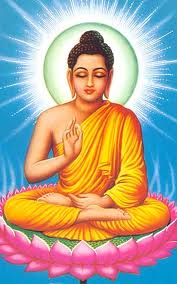
There were two major religions that were prominent during this time period: Hinduism and Buddhism. Hinduism, which was the religion of the majority of India, is very unique as no central figure in credited for
developing the religion. It encouraged mystical and worldly pursuits and was convenient for many as it was highly adaptable in many groups. Hinduism originated in the Vedic and Epic ages. The Vedas are a set of
religious books which contain hymns, such as the Rig-Veda. Hinduism is ritualistic and uses many ceremonies performed by the Brahmans, or priests. The religion is very mystic as it united human beings with the divine deities that they praise. It also encourages good morals and behavior because of karma.
Hinduism was favored under the Guptas because of the gods. They claimed that they had the divine right to rule. Hinduism focuses on
reincarnation and the caste system, which India followed for many years. Hindus believe in meditation and self-discipline as well as yoga for a good life. Life obligations of Hindus are supposed to be their dharma. They believe that no matter what a person’s dharma is, they must follow it in order to be able to end the reincarnation cycle and be able to become one with deities.
Buddhism began in 563 BCE with Siddhartha Gautama, also known as the enlightened one. Siddhartha was a king who was unhappy with his life and set out to find some answers. Many people see him as divine. He found that holy life can be achieved only through individual effort no matter what place in society a person falls under. The goal is to reach nirvana through mediation to stop the
reincarnation cycle. This religion encouraged missionaries, or monks. Monks traveled spreading the religion around India and in China. Dharma and karma are also important aspects of the religion but it completely dismisses the caste system, which is why the religion was attractive to so many people. In Buddhism, it is important to regulate life and to have self-control in order to be able to reach nirvana.
developing the religion. It encouraged mystical and worldly pursuits and was convenient for many as it was highly adaptable in many groups. Hinduism originated in the Vedic and Epic ages. The Vedas are a set of
religious books which contain hymns, such as the Rig-Veda. Hinduism is ritualistic and uses many ceremonies performed by the Brahmans, or priests. The religion is very mystic as it united human beings with the divine deities that they praise. It also encourages good morals and behavior because of karma.
Hinduism was favored under the Guptas because of the gods. They claimed that they had the divine right to rule. Hinduism focuses on
reincarnation and the caste system, which India followed for many years. Hindus believe in meditation and self-discipline as well as yoga for a good life. Life obligations of Hindus are supposed to be their dharma. They believe that no matter what a person’s dharma is, they must follow it in order to be able to end the reincarnation cycle and be able to become one with deities.
Buddhism began in 563 BCE with Siddhartha Gautama, also known as the enlightened one. Siddhartha was a king who was unhappy with his life and set out to find some answers. Many people see him as divine. He found that holy life can be achieved only through individual effort no matter what place in society a person falls under. The goal is to reach nirvana through mediation to stop the
reincarnation cycle. This religion encouraged missionaries, or monks. Monks traveled spreading the religion around India and in China. Dharma and karma are also important aspects of the religion but it completely dismisses the caste system, which is why the religion was attractive to so many people. In Buddhism, it is important to regulate life and to have self-control in order to be able to reach nirvana.
Society
The Caste system was one of the biggest factors of society during this period. Not only did it separate classes but it promoted public order,
created some flexibility, and it avoided slavery. Although it avoided slavery, the untouchables were still an existing group who were considered the lowest people in the castes. The caste system was made up of Brahmins at the top, warriors, the jati or the sub castes, and at the bottom, the untouchables. Castes assigned people occupations and marriage. Merchants, unlike in China, enjoyed their position in the Caste system.
Women’s rights became increasingly limited as agriculture increased and as the Indian civilization developed. Male dominance was greater
in theory than in practice even though it was a patriarchal society. Wives worshipped their husbands as a god and the limited power women had was a pattern seen among all expanding civilizations and agriculture. One of the questions posed by Indians was whether women could advance spiritually even if they did not reincarnate as men. Along with the castes systems, there were arranged marriages. Nobody could marry outside their own caste, and if this were the case, they could only move down in the caste system. Children were expected to
work hard in all families and there was a strong emphasis of loving relations although arranged marriages were a part of the culture.
created some flexibility, and it avoided slavery. Although it avoided slavery, the untouchables were still an existing group who were considered the lowest people in the castes. The caste system was made up of Brahmins at the top, warriors, the jati or the sub castes, and at the bottom, the untouchables. Castes assigned people occupations and marriage. Merchants, unlike in China, enjoyed their position in the Caste system.
Women’s rights became increasingly limited as agriculture increased and as the Indian civilization developed. Male dominance was greater
in theory than in practice even though it was a patriarchal society. Wives worshipped their husbands as a god and the limited power women had was a pattern seen among all expanding civilizations and agriculture. One of the questions posed by Indians was whether women could advance spiritually even if they did not reincarnate as men. Along with the castes systems, there were arranged marriages. Nobody could marry outside their own caste, and if this were the case, they could only move down in the caste system. Children were expected to
work hard in all families and there was a strong emphasis of loving relations although arranged marriages were a part of the culture.
Innovation
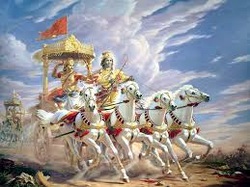
In Classical India, there were important advances in the sciences and areas of mathematics. The Gupta’s supported a university at Nalanda which taught religion, medicine, and architecture as well as astronomy and medicine.
Much of their learning was borrowed from the Greeks, especially from Alexander the Great.
The numeral system used during this time was imported through Arabs. These numbers were called “Arabic” but were still considered Indian. Indians developed the concept of zero and a decimal system. They also developed the idea of negative numbers and square roots, and a more accurate value of pi.
The sciences were greatly supported by the university, especially astronomy and medicine. However, religion prevented dissection and this limited the amount of anatomy that Indians could learn first-hand. They had to learn from studying and other means. Although dissection was prohibited, they did develop bone setting, plastic surgery, and sterilization which didn’t reach the west until a much later time. Aryabatta calculated the length of the solar year and improved many mathematical measurements. The rotation of earth on its axis was also calculated during this time and seven planets were identified, not to mention a theory of gravity was developed.
The most famous form of literature during this time was the Vedas, which were the books used in Hinduism and were mostly written in poems
and hymns. Sanskrit was the language in which the books were written in and in which the epics, the Mahabharata and the Ramayana, were written in. these epics are stories of the deity Krishna and fable anthologies of the classical era.
Much of their learning was borrowed from the Greeks, especially from Alexander the Great.
The numeral system used during this time was imported through Arabs. These numbers were called “Arabic” but were still considered Indian. Indians developed the concept of zero and a decimal system. They also developed the idea of negative numbers and square roots, and a more accurate value of pi.
The sciences were greatly supported by the university, especially astronomy and medicine. However, religion prevented dissection and this limited the amount of anatomy that Indians could learn first-hand. They had to learn from studying and other means. Although dissection was prohibited, they did develop bone setting, plastic surgery, and sterilization which didn’t reach the west until a much later time. Aryabatta calculated the length of the solar year and improved many mathematical measurements. The rotation of earth on its axis was also calculated during this time and seven planets were identified, not to mention a theory of gravity was developed.
The most famous form of literature during this time was the Vedas, which were the books used in Hinduism and were mostly written in poems
and hymns. Sanskrit was the language in which the books were written in and in which the epics, the Mahabharata and the Ramayana, were written in. these epics are stories of the deity Krishna and fable anthologies of the classical era.
Arts/ Architecture
Art during this era in India was more stylized than realistic, unlike in Greece. Most of the art during the time was used for religion or to
depict religion. Other themes used in art were the joy of life, but mainly it was the celebration of religion. The Indians had an appreciation of nature and animals. In most paintings, the artwork is very busy and colorful. They usually include many animals, a nature scene, people, and deities as well. In artwork, deities are different colors than humans, most of the time blue. This type of artwork mostly portrayed Hinduism.
Buddhist art was created in different ways, mostly in sculptures and shrines. The Stupas built during this time were spherical shrines built for
the Buddha. Cave architecture emerged before the classical period but prevailed throughout the era. It is believed to have started in third century BCE. The caves were used by Buddhists monks as places of worship and as places to live. Rock-cut structures are the most famous pieces of Indian art. Most of these structures are related to religion, especially Buddhism. They were produced mainly in Bihar when the structures barley emerged. Temple architecture was developed with high standards. These were constructed mainly of stone and were extremely vast. These temples were decorated and fractals have been used to study the architecture of these buildings.
depict religion. Other themes used in art were the joy of life, but mainly it was the celebration of religion. The Indians had an appreciation of nature and animals. In most paintings, the artwork is very busy and colorful. They usually include many animals, a nature scene, people, and deities as well. In artwork, deities are different colors than humans, most of the time blue. This type of artwork mostly portrayed Hinduism.
Buddhist art was created in different ways, mostly in sculptures and shrines. The Stupas built during this time were spherical shrines built for
the Buddha. Cave architecture emerged before the classical period but prevailed throughout the era. It is believed to have started in third century BCE. The caves were used by Buddhists monks as places of worship and as places to live. Rock-cut structures are the most famous pieces of Indian art. Most of these structures are related to religion, especially Buddhism. They were produced mainly in Bihar when the structures barley emerged. Temple architecture was developed with high standards. These were constructed mainly of stone and were extremely vast. These temples were decorated and fractals have been used to study the architecture of these buildings.
Near Geographic

Classical India was relatively close to other civilizations and was influenced by the Middle East and Mediterranean. The Persian empires were going through a time of conquest so they were forced to adapt and were greatly
influenced by Alexander the Great. Passes through the Himalayas linked India mostly. The first civilizations settled near the Indus and the Ganges River. They had mountainous terrain to the north where there existed large herding
societies. The Indians had an unstable monsoon climate but the monsoons did help with the agriculture and their agriculture based economy. They usually produced two crops a year to help support their large population.
http://www.course-notes.org/World_History/Outlines/World_Civilizations_The_Global_Experience_4th_Edition_Outlines/Chapter_3_%E2%80%93_Cl
http://wps.ablongman.com/long_stearns_wcap_4/18/4646/1189535.cw/
http://www.britannica.com/EBchecked/topic/285771/Indian-literature
http://www.crystalinks.com/indiarchitecture.html
influenced by Alexander the Great. Passes through the Himalayas linked India mostly. The first civilizations settled near the Indus and the Ganges River. They had mountainous terrain to the north where there existed large herding
societies. The Indians had an unstable monsoon climate but the monsoons did help with the agriculture and their agriculture based economy. They usually produced two crops a year to help support their large population.
http://www.course-notes.org/World_History/Outlines/World_Civilizations_The_Global_Experience_4th_Edition_Outlines/Chapter_3_%E2%80%93_Cl
http://wps.ablongman.com/long_stearns_wcap_4/18/4646/1189535.cw/
http://www.britannica.com/EBchecked/topic/285771/Indian-literature
http://www.crystalinks.com/indiarchitecture.html
P.E.R.S.I.A.N Chart for the Middle East during the Classical Period
By Christian Estrada
Political-
- Persian Empire
- Famous monarchs Cyrus (557-530 B.c.e) and Darius (522-468 B.c.e)
- Conquers Egypt to India
- Monarchy political system
- People believed that the Persian king was the "king of Kings"
- Persian Governors called satraps were appointed in all of the empires 23 provinces
- Lower level officials were chosen by local authority
- Persian Bureaucracy and Court life, replete with administrators, tax collectors , record keepers, and translators
- Susa and Persepolis were elaborate imperial centers
- Greco-Persian wars break out due to revolts in Persian controlled areas known as the Anatolian sea coast.
- Persia seeks to punish Greece for the rebellions twice and both times is defeated by the Greeks on land and on the Seas.
- Persia is later conquered by king Phillip's son Alexander the Great. (333-323 B.c.e)
Economic-
- Darius I revolutionized the economy by placing it on silver and gold coinage
- Efficient infrastructure that facilitated the exchange of commodities among the far reaches of the empire.
- Trade is a main source of revenue along with agriculture and tribute
- Main trade partners include India, SouthWest Asia, and Egypt through extensive trade routes.
Religious-
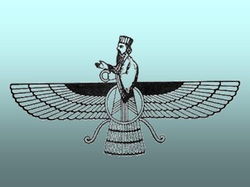
- Zoroastrianism was the major religion in the area
- It is the first monotheistic religion recorded on history
- Based on teachings and philosophies of Zoroaster, the religious prophet and founder
- Most important text in the religion is the Avesta which is written in Avestan, a language that was formerly spoken throughout Persia
- States that there is only one true god, but that lesser gods control the good and evil in the world.
- Accepted by Persian Emperors as the official religion of Persia
- Darius gives, what is now Israel, area back to the Jews
- Judaism is a minor religion throughout the time period
- Holy book of Judaism is known as the Torah which contains the Old Testament
- Jesus is born in Nazareth, thus beginning Christianity
- Christianity begins to take hold and begins to spread throughout Europe and the Mediterranean
- Holy Book for Christians is known as the Bible
- Main deities of the time period are Jesus, Abraham, and Yaweh
Society-
- Slavery in Persia was mainly people who had been captured in conflicts with other empires,
- Persian social system was similar to the one in India in the way that it was very challenging to move up in the social system
- Priests had high status, they were only below the King and Royal family
- Merchants, Craftsman, and Peasants were among the bottom of the social class system
- Women are seen as the central figure in family structure
- The mother of the King has the highest authority after the King in the royal family.
- After the mother comes the Queen and then the Kings Sisters, Brothers, Sons and then Daughters.
Intellectual/Arts and Architecture-
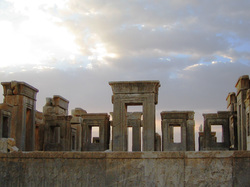
- Due to the size of Persia, art differed form state to state ,but is one of the richest art societies in history
- Persian Art includes architecture, painting, weaving, pottery, calligraphy, metalworking, and stone masonry.
- The value and uses of iron were made know throughout the empire.
- Many languages were spoken because of the many cultures of the Persian People
- The general Philosophy throughout Persia was the worst of all sins and ws punishable by death.
- The Persians had some of the most distinctive architecture in the world.
- The Capitol of Persepolis was brilliantly built and was by most standards one of the most beautiful cities in the world.
Near Geography-
- The Persian Empire stretched over 7.5 million kilometers at its peak of dominance
- The Empire was located near major bodies of water such as the Black Sea and Mediterranean sea and rivers such as the Indus and Nile Rivers
- Relied on a system of roads of roads to maintain unity within the giant size land mass of the Empire
- On the Northern border of Persia, were modern day Afghanistan is, they had a very large mountain range that provided a natural barrier .
P.E.R.S.I.A.N Chart for China during the Classical Era
By America Guerrero
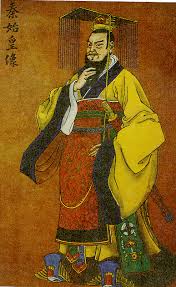
P(olitical)
- Zhou dynasty expanded China's territory boundaries by taking over the Yangtze River Valley
- Once the Zhou dynasty began to fall, philosophers turned to Confucian to explain the political confusion
- Qin dynasty was then established (from 221 BCE-202 CE) by a brutal but successful emperor named "Shi Huangdi", who was the one to make China centralized
- Once Shi Huangdi died, inmense revolts took place and then the Hna dnasty was established
- The Han dynasty was less violent and brudal than the Qin but maintained the centralized rule in China (from 202 BCE-220 CE)
- Wu Ti, an early Han ruler expanded China and created formal training (influenced by Confucian philosophy) for bureaucrats
- the Han dynasty fell to outside forces in the 6th century CE
- Han's political and cultural values maintained till the 20th century
- By the end of the Han's dynasty China had about 130,000 bureaucrats to carry out the emperor's policies
- China maintained its centralization by collecting taxes and annual mandatory labor service
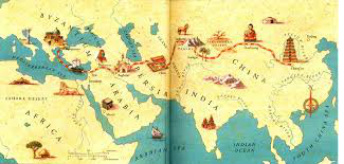
E(conomy)
- trade was extremely important during the Han dynasty
- the luxuries China had such as; silk, jewelry, leather goods, and furniture, were what triggered other regions to trade with China providing them with the necessary goods they didn't posses
- to make trade easier the first emperor created a uniform weights and measure system
- Silk Roads allowed the trade in China to become external
- China's economy was mainly focused on agriculture
- the state advocated an extensive internal trade
- technology innovations were rich to the economy and encouraged reliance on agriculture, made the population grow and cities to expand
- The technological innovations were; the ox-drawn plows, water-powered mills and papers
- The water-powered mills and paper were both created under the Han dynasty
- China had no desire to learn from other societies other than trade.

R(eligion)
- Confucianism and Daoism were the two major systems in China
- Confucianism arose from the King Fuzi (Confucian) who wasn't really a religious man, he was more of a man who seaked to preserve China's tradition and embraced a secular system of ethics
- The Confucian Values:
- REN: which meant kindness and sense of humanity
- LI: sense of property
- XIAO: respect and worship of the family (specially the elderly)
- JUNZI: emphasized education to all talented and intelligent members of society
- Confucian strongly believed that both the ruled and the ruler should have respect, humility, and self-control
- Daoism was a more religious philosophy based on more harmony and nature
- Daoism arose during the "Period of Warring States", by "Laozi" and was first introduced to the upper class
- Daoism created a division in China's religious and philosophical culture
- in Laozi's words, "True human understanding comes from withdrawal from the world and contemplating life force."
- The word Dao means "the way of nature"
- politics, learning, and general conditions were not so important to Daoism
- Legalism was another system practiced based on confucianism with a harsh rule, and developed after the fall of Zhou and "Period of Warring States"
- Legalism was a favored authoritarian state that ruled by force
- It believed that human nature was evil and required discipline and crontrol
- it emphasizes that in a proper state, the army controls and the people labor
- The use of chopsticks was practiced more now because of confucianism beliefs, which stressed the importance of good manners and showing politeness at meals

S(ociety)
- the upper class was about 2% of China' population
- there were 3 main social groups;
- at the top were the landowning aristocrats and the bureaucrats
- below them were the laboring peasants and urban artisans
- the last group were the "mean people" those who did unskilled labor
- literacy was mainly limited to the elite
- In the southern rice regions, property was claimed by the village as a whole or extended family, rather than individuals
- In some cases, talented people descending from peasantry were allowed/given education and rise within the bureaucracy
- During the Han's dynasty, patriarchal family was enhanced, through women's subordination to men
- Confucian's "Classic of Filial Piety" influenced children to obey and honor their superior and elderly
- Confucian said, " There are no wrongdoing parents." that meant law courts didn't punish parents who harmed or killed children
- Ban Zhao wrote "Admonitions for Women" in Han families by teaching them humility, obedience, and devotion for their husband
- tight family organizations were believed to help solidify the economy and social views
- Family at this time was at the center of orderly hierarchy
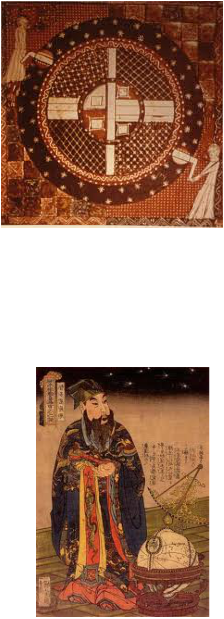
I(nnovations)
- China's astronomers developed a calendar based on a year of 365.5 days
- and later then calculated the movement of planets
- During the Han dynasty, scientists came up with a type of seismograph to register earthquakes
- and studied the principles of hygiene that promised a long life
- During the Zhou dynasty, five classics were written merging with Confucious doctrine to create basis for civil service exams
- Education was for the talented and intelligent people, the upper class
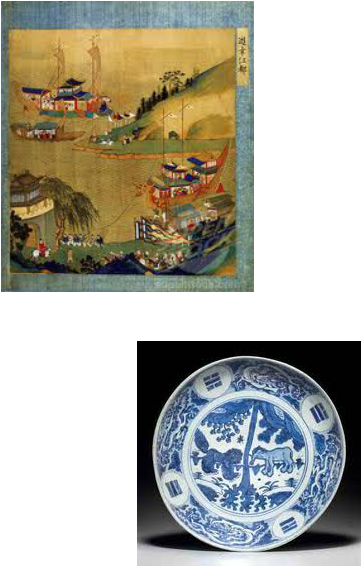
A(rts)
- The art in pottery, buildings, and other things became more elaborated and colorful, influenced by Daoism and Confucianism
- Art and literature blended in with Confucianism and its beliefs
- The classic of songs consisted of 300 poems; about love, joy, politics, and family
- The form of art practiced the most were; calligraphy, bronze, pottery, carved jade and ivory, and silk screens
- The Great Wall was built under the Qin dynasty
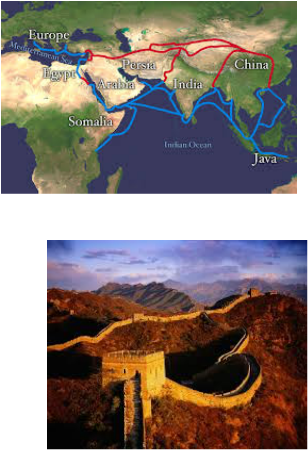
N(ear geography)
- Shi Huangdi extended China's territory to the South
- this expansion allowed direct contact with India and created a contact with the Middle East
- Qin dynasty built the Great Wall that extended over 3,000 miles
- there was peace throughout the continent thanks to the Han dynasty, which made the society grew
